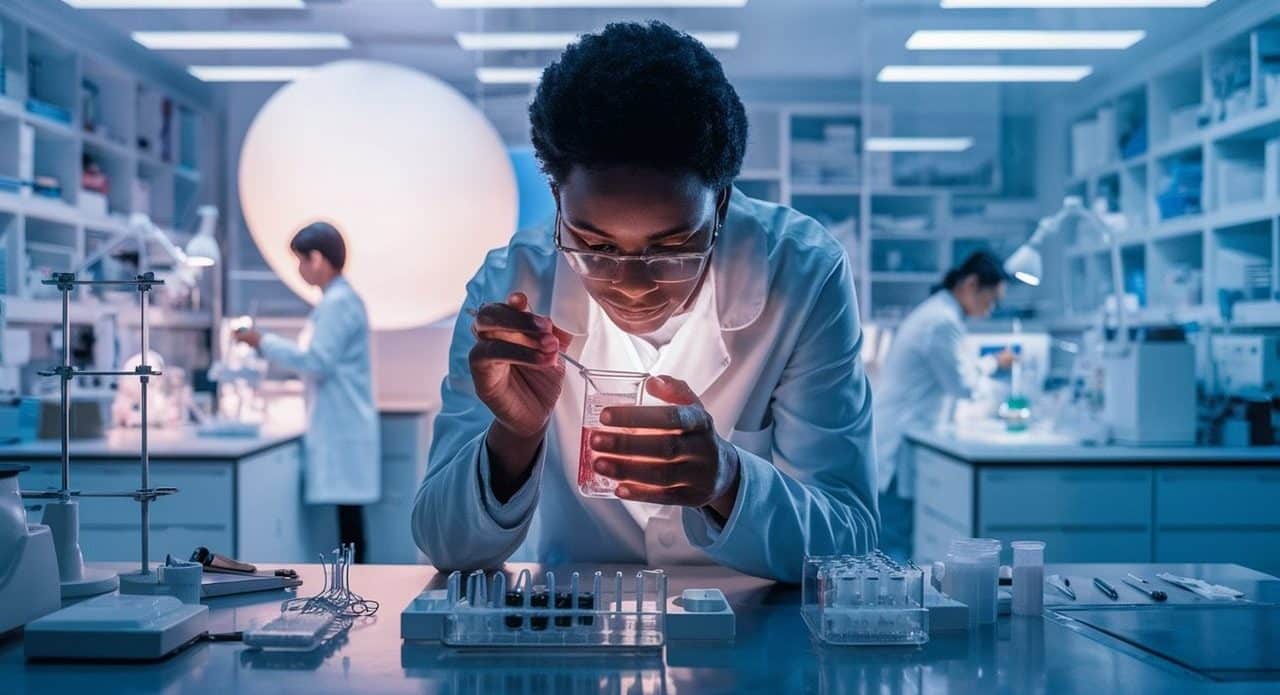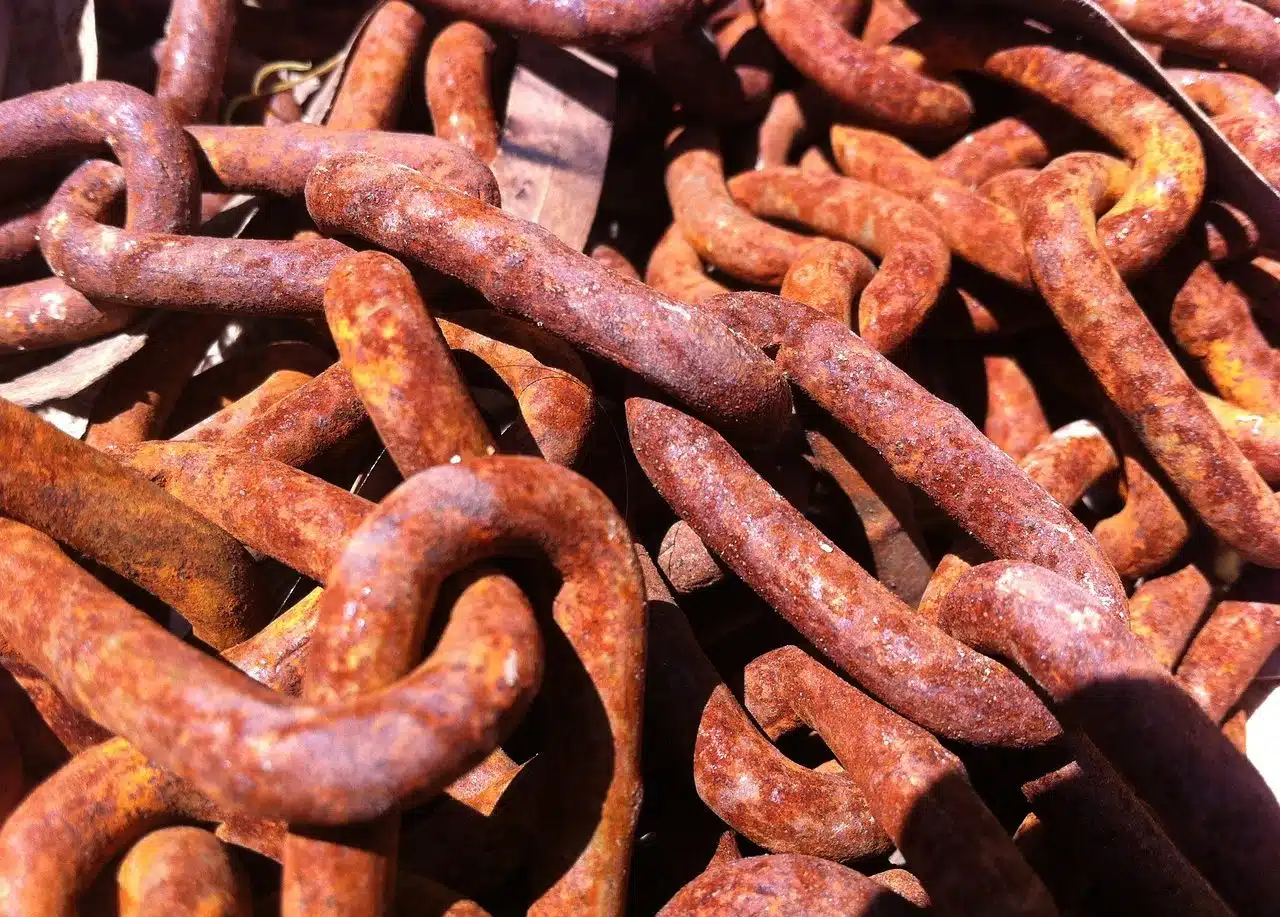
The time chemical reactions take is measured under the name reaction rate .
Reaction rate is a measure of how quickly chemical reactions take place. It is defined as the change in the concentration of reactants or reaction products per unit of time. It can be expressed in terms of the decrease in the concentration of a reactant or the increase in the concentration of a product in a given amount of time. The reaction rate can depend on several factors, such as temperature, the presence of a catalyst, and the contact surface of the reactants.
Examples of reaction speed
The reaction rate varies significantly depending on the conditions and types of chemical reactions.
Iron oxidation (corrosion)
The reaction between iron and oxygen in the presence of water to form iron oxide (rust) is a slow process. The speed of this reaction depends on factors such as humidity and the presence of salts.
Reaction of hydrochloric acid and zinc
The reaction between hydrochloric acid and zinc to produce zinc chloride and hydrogen is relatively rapid. The rate increases with the concentration of hydrochloric acid and temperature.
Propane combustion reactions
The combustion of propane in the presence of oxygen to form carbon dioxide and water is a very rapid reaction, which releases a large amount of energy in the form of heat and light.
Decomposition of hydrogen peroxide
The decomposition of hydrogen peroxide into water and oxygen can be slow, but is significantly accelerated in the presence of a catalyst such as manganese dioxide.
Photosynthesis in plants
Photosynthesis is a series of complex chemical reactions in which plants convert carbon dioxide and water into glucose and oxygen using solar energy. The speed of these reactions depends on the intensity of light, the concentration of carbon dioxide and the temperature .

The rate of iron oxidation depends on humidity and the presence of salts, among other factors.
Chemical kinetics
Reaction rate is intrinsically related to chemical kinetics, which is the study of the rates of chemical reactions and the factors that influence them.
Kinetic theory of gases
It explains the behavior of molecules in gases, suggesting that the molecules are in constant random motion and that the speed of a chemical reaction depends on the frequency and energy of the collisions between the reactant molecules. This theory helps understand how temperature and pressure affect the rate of gas reactions.
First order kinetics
That whose speed depends linearly on the concentration of a single reactant .
Second order kinetics
It may depend on the concentration of a single reactant squared or of two different reactants.
Zero order kinetics
The reaction rate is constant and does not depend on the concentration of the reactants.
Pharmacokinetics
The study of how drugs are absorbed, distributed, metabolized, and eliminated in the body. The kinetics of pharmacological processes can follow different reaction orders, depending on the drug and biological conditions.
Enzyme kinetics
Study the rates of reactions catalyzed by enzymes. A commonly used model is Michaelis-Menten kinetics, which describes how the rate of an enzymatic reaction depends on the concentration of the substrate and the affinity of the enzyme for the substrate.
molecular kinetic energy
The energy that molecules possess due to their movement. In the context of chemical kinetics , it is crucial because it determines whether collisions between molecules have enough energy to overcome the activation barrier and form products.
Related theories
Collision theory
It states that for a chemical reaction to occur, the reactant molecules must collide with each other in the proper orientation and with enough energy to overcome the activation barrier. The frequency of collisions and the activation energy are two key points of this theory.
Transition state theory
Also known as activated complex theory , it postulates that during a chemical reaction a high-energy intermediate state known as the activated complex or transition state is formed.
Acid-base theory
In the context of acid-base reaction kinetics, this theory can involve several definitions, but in terms of reaction rate, it focuses on how acids and bases affect reaction rates.

The rate of photosynthesis is affected by light intensity, carbon dioxide concentration, and temperature.
speed constant
The rate constant, commonly denoted as k , is a proportional factor in the rate equation of a chemical reaction. It represents the intrinsic speed of the reaction when the concentrations of the reactants are under standard conditions (usually 1 Molar for solutions).
It depends on the nature of the reaction and factors such as temperature and the presence of a catalyst. It provides a quantitative measure of how quickly reactants are transformed into products and is specific for each given reaction and experimental conditions.
Related laws
speed law
A mathematical expression that describes the relationship between the rate of a chemical reaction and the concentrations of the reactants.
Law of mass action
It states that the rate of a chemical reaction is proportional to the product of the concentrations of the reactants, each raised to a power equal to its stoichiometric coefficient in the balanced chemical equation.
Arrhenius Law
It is fundamental in chemical kinetics because it describes how temperature affects the rate of chemical reactions. It states that as the temperature increases, the reaction rate also increases.
ideal gas law
Describes the behavior of gases in terms of pressure, volume, temperature and amount of substance.
In the context of reaction rate, this law is useful for relating experimental conditions and understanding how changes in pressure and temperature affect the rates of gaseous reactions.
real gas law
Corrects the ideal gas law to take into account deviations observed in real gases, especially at high pressures and low temperatures.
In the context of reaction rate, the real gas law is important for situations where gaseous reactants or products do not behave ideally , thus affecting reaction rate measurements and calculations.
